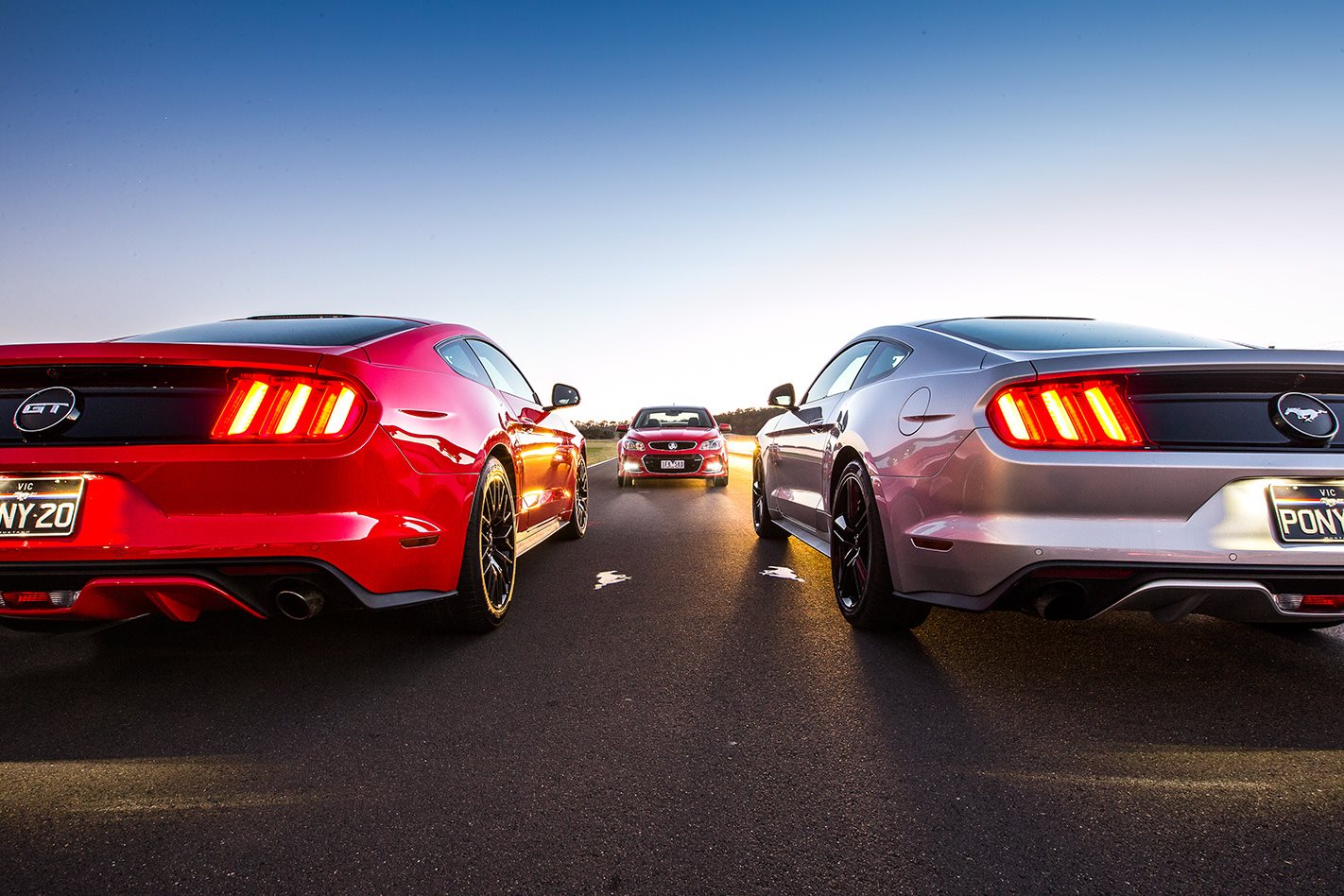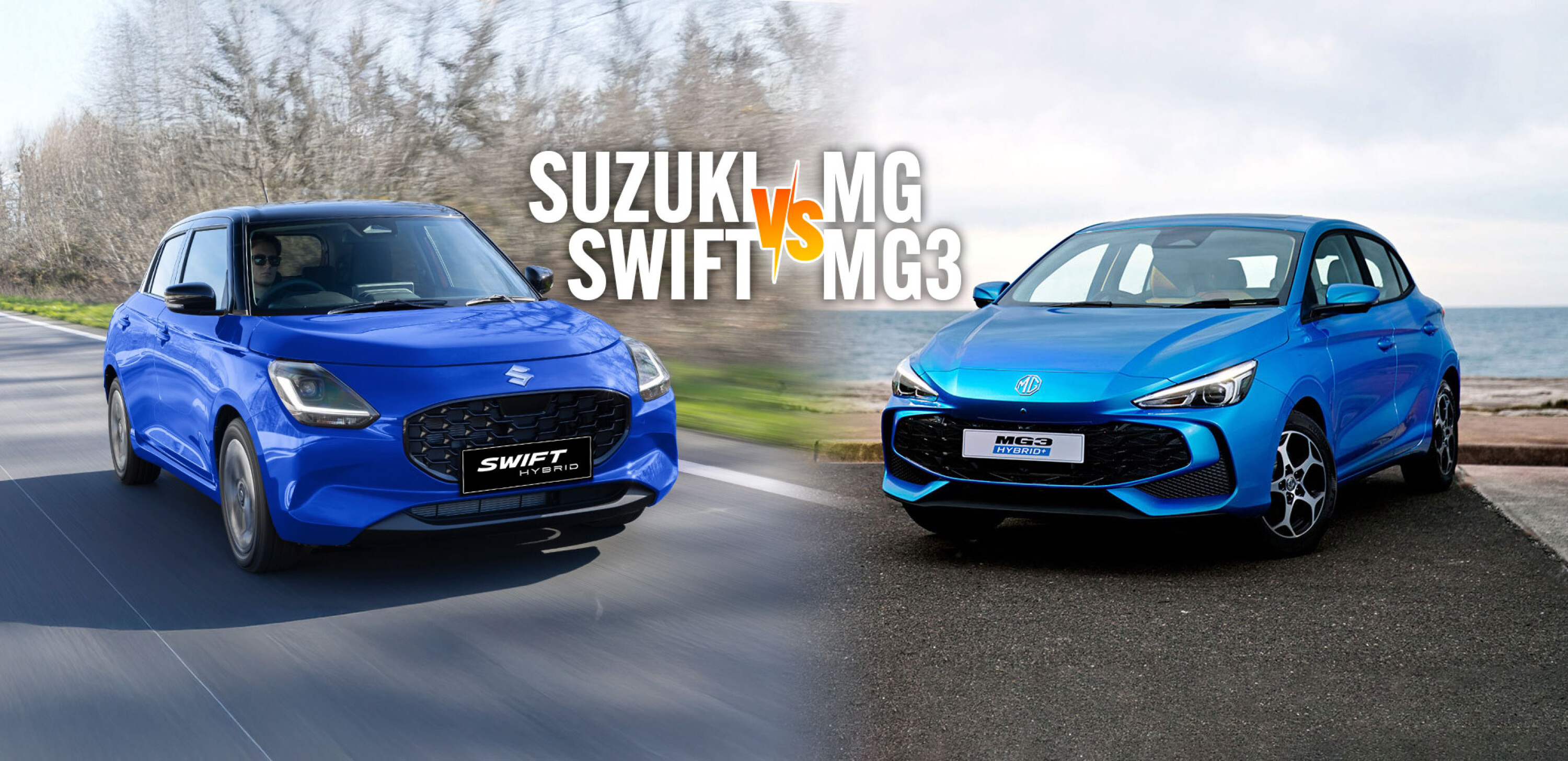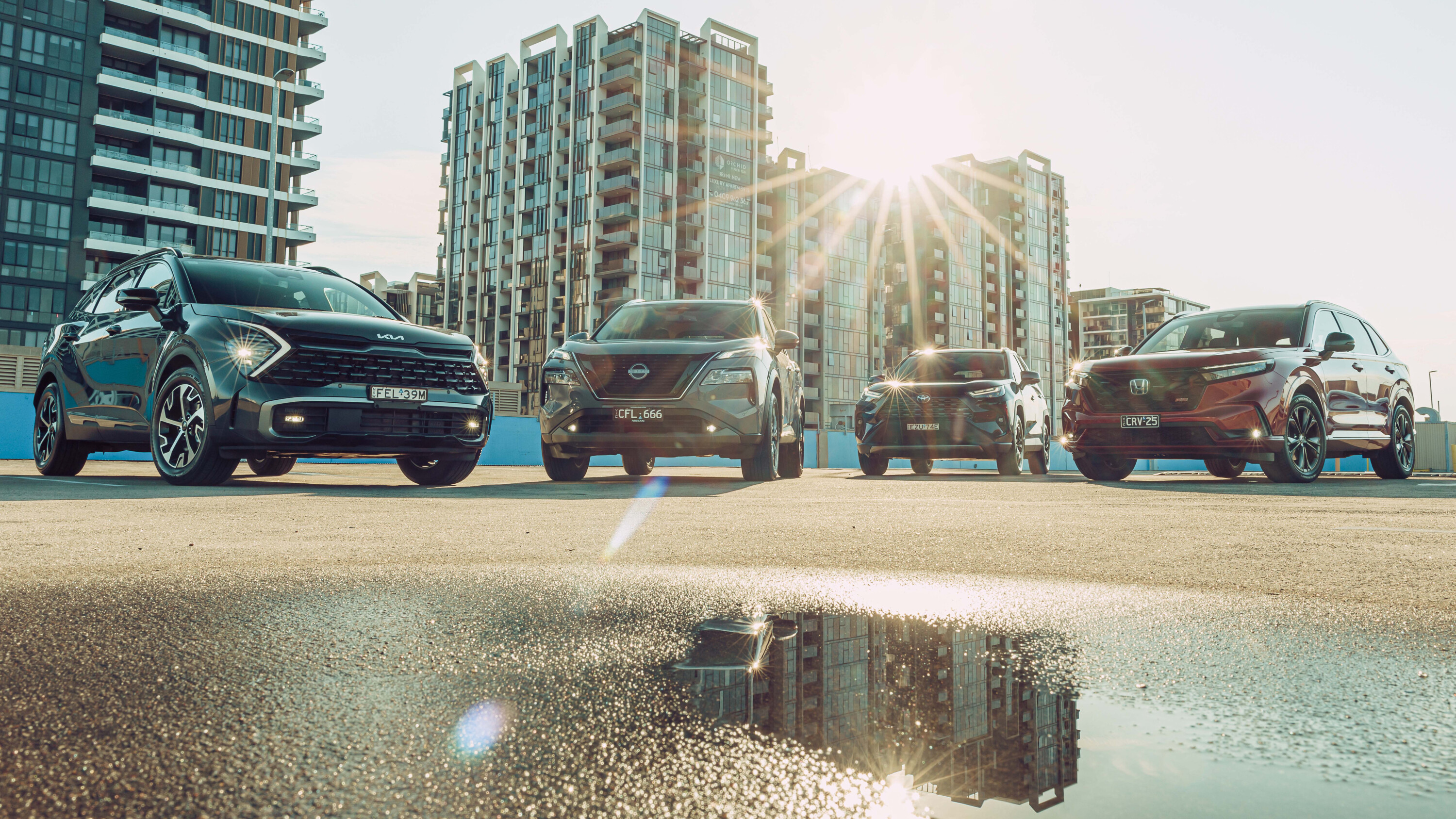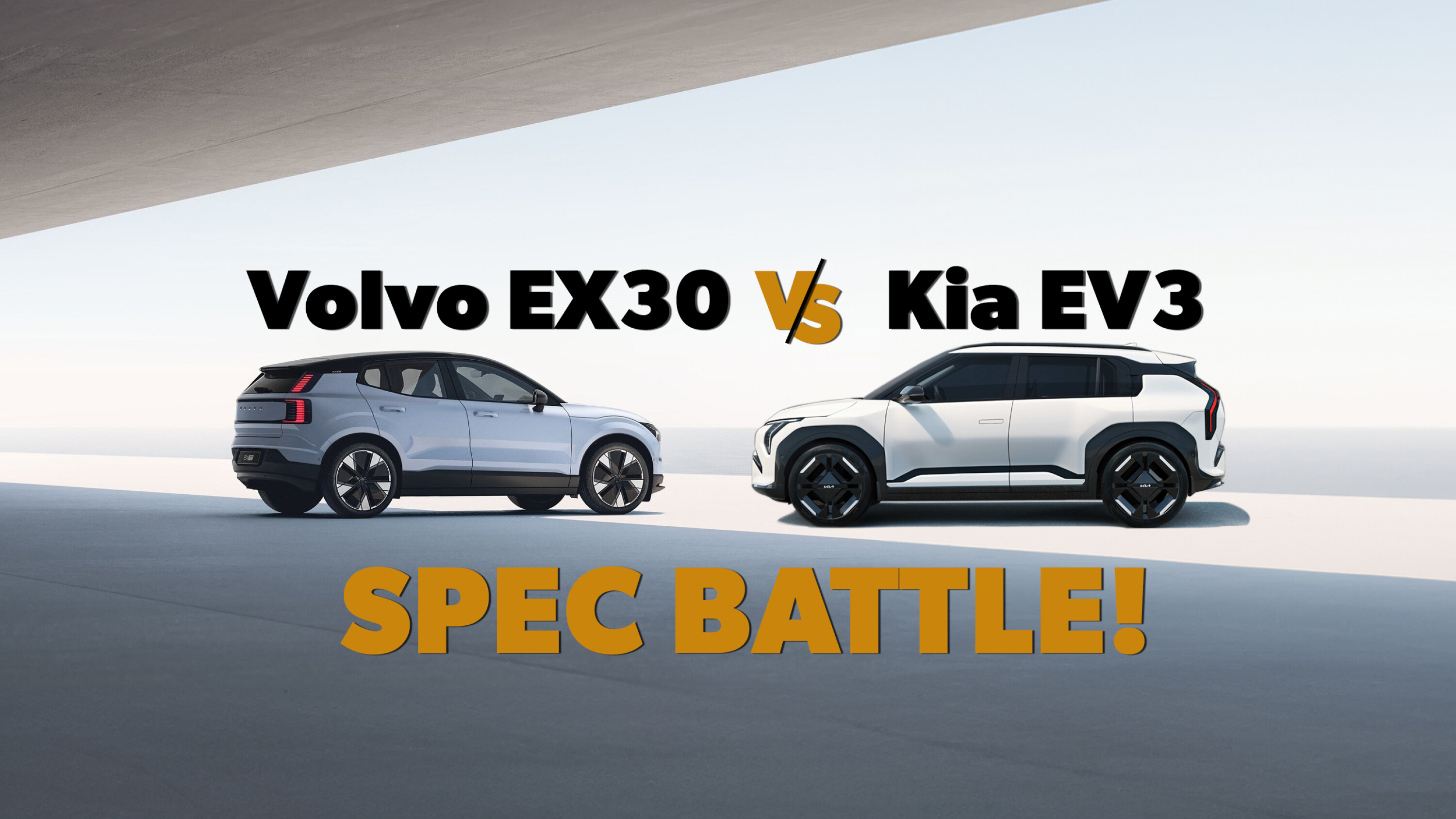A war has raged for six decades on Australian roads, each tribe with its share of glorious victories and bitter defeats. This year, Ford has a new weapon – an American icon, no less – in the battle for V8 domination. Can the Mustang invader defeat Australia’s own Holden Commodore SS-V Redline?
Looking back, I blame the photographer. After all, it was her idea to drive the Mustangs here. Her idea to “get a few shots of the cars with some school kids”. Her idea to create this scene of pubescent chaos, this tidal wave of pressing human flesh.
If I wasn’t so worried about the little terrors nicking the keys, I’d be impressed at how many of them there are. We’ve hijacked morning assembly at a college in Bathurst, deep inside Ford and Holden country, and news of our arrival spreads almost as quickly as pictures of the cars are uploaded to Facebook, so strong is the pulling power of the new Mustang
As one sandy-haired kid gushes, his freckled face flushed with excitement, “It looks unreal!”
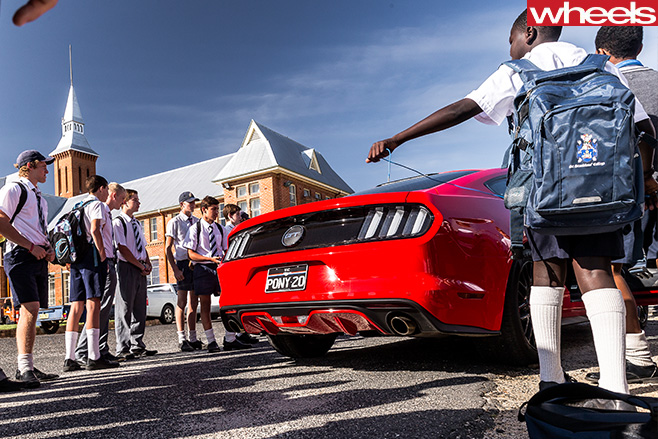
It’s also instantly recognisable. Every one of these kids knows that this is a pair of Mustangs. They also seem to love them unconditionally. Well, at least until I reveal the silver car is powered by a four-cylinder engine. I doubt telling them it was laced with Ebola would have seen them back away any faster.
“But isn’t a Mustang meant to have a V8?” asks one perplexed teen. This isn’t the only time we’ll hear this question over the next two days.
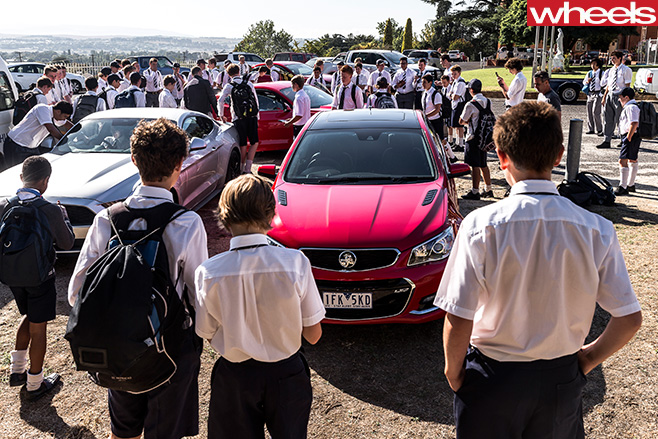
It also brings out an army of teachers, so we quickly prise the students out of the seats, ignoring their cries of “C’mon, it’s a Mustang!”, and head for the twisting ribbons of tarmac that drape rural New South Wales.
I jump in the V8 Mustang and discover that driving it only adds to its sense of character and occasion. You sit low in comfortable, well-supported leather seats, there’s a satisfying V8 burble, and the view through the windscreen – in both models – is dominated by two wonderfully sharp bonnet bulges that draw your eyes down the road ahead.
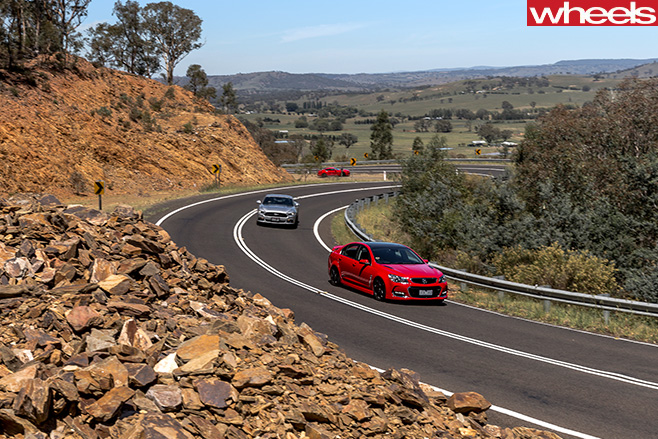
Built as a global car on an all-new platform – hence its arrival Down Under in factory right-hand drive
14 years after the fourth-generation’s shortlived Tickford conversion program ended – the Mustang boasts a fully independent rear suspension for the first time. Every previous ’Stang has made do with leaf springs and a live rear axle. Aussie-spec cars also get a variation of the optional Performance Pack offered in the US, which brings stiffer springs, firmer dampers, thicker anti-roll bars and a limited-slip diff.
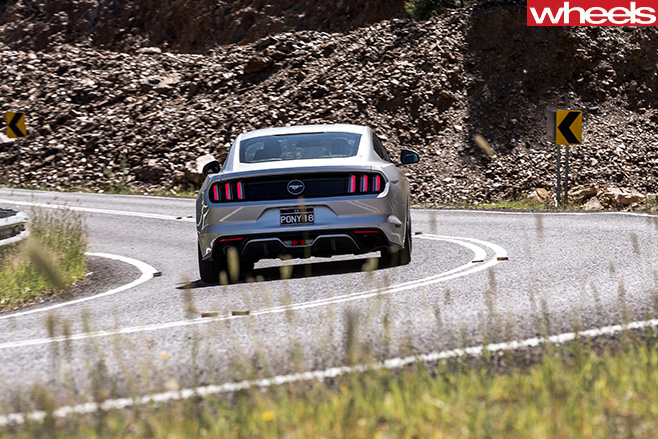
Which is why we’ve brought the SS-V Redline, our current affordable rear-drive V8 benchmark. On paper its fight with the Mustang GT is close. Both are under $60K, produce similar outputs and shuffle their grunt through six-speed automatics. They also ride on 19-inch wheel/tyre packages and, despite the Commodore’s extra doors, weigh within 56kg of each other.
The odd one out in this group is the Ecoboost Mustang. Not just because it has half the cylinders but because of its $45,990 price tag. Which begs the question: do you need to spend an extra $14K on the V8 Mustang GT, or is the Ecoboost the better buy?

The GT and Ecoboost have identical cabins, and on face value the interior is a hit, delivering a sense of occasion to match the exterior thanks to retro-cool design. Look closer, though, and you begin to notice some annoying misses: the centre console is unchanged from left-hand-drive markets, so the handbrake is on the passenger side; the cupholders are precisely where your arm sits when shifting gears in manual variants; and there’s no digital speedo. Then there’s the mismatch of materials, which range from superb (real aluminium on the centre stack) to sub-par (hard, scratchy plastics on the door and centre console).
And don’t expect to ferry too many people around in that rear seat. Despite its 2720mm wheelbase, the Mustang is strictly a 2+2, not a fastback Falcon. Adults can fit, just, but even when they cram their legs behind the front seats, the steeply raked roofline means headroom is seriously compromised.
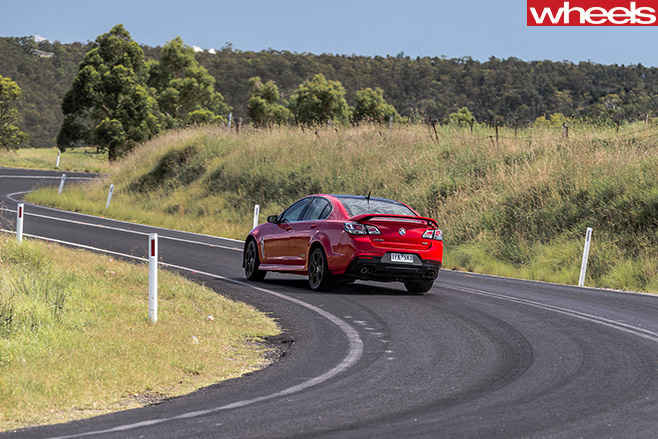
There’s no denying the Ecoboost Mustang matches the GT for visual drama and interior style, but can its 2.3-litre four really go toe-to-toe with the beefier V8s?
The Ecoboost we have here is mated to a six-speed manual and it’s a terrifically eager drivetrain. Fed by a twin-scroll turbo, the four makes 233kW and a chubby 432Nm at 3000rpm. Most of that torque is available from 1720rpm, so there’s plenty of low-down shove. The gearbox is sweet, too, with positive shifts, a short gate and an intuitive clutch action.
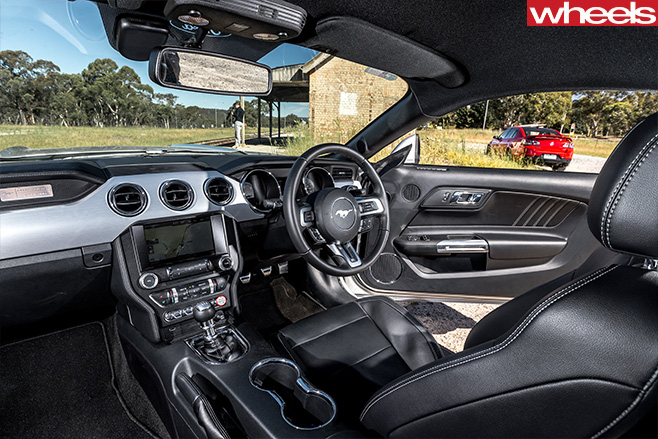
Wheels wingman Damion Smy sums it up perfectly: “The Ecoboost might leave you feeling disappointed in terms of noise and drama. It just doesn’t deliver.”
It’s a point rammed home by climbing back into the GT. With the road getting twistier, the GT provides a more authentic Mustang experience. There’s something deeply satisfying about driving a Mustang with a V8, and the GT’s 5.0-litre unit is a cracker. Linear, eager and muscular, the bent-eight feels as though all of its 306kW/530Nm are present and accounted for.
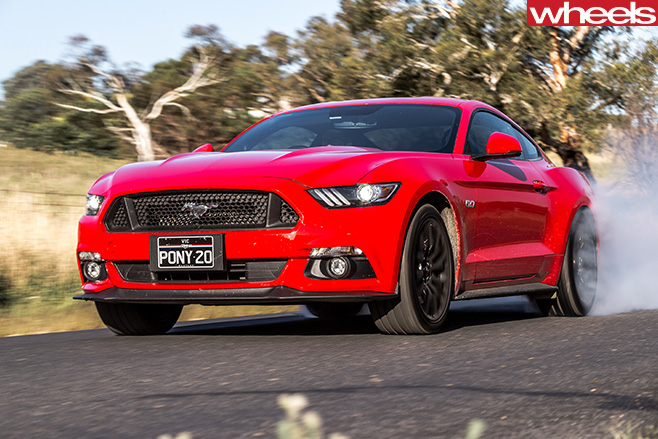
While neither setting is the last word in feel, the tiller provides enough connection to get the most out of the cracking chassis. If previous Mustangs had an aversion to corners, this new one devours them. There’s minimal bodyroll and, while you’re aware of the ’Stang’s considerable size and 1747kg kerb weight, the chassis is beautifully balanced. Understeer and oversteer are well telegraphed and if you nail the entry speed and get on the throttle early, the rear axle squats beautifully and drives through the apex. It all feels nicely sporty and confidence-inspiring, but the Mustang’s real party trick is its adjustability. Come in too hot and you simply bleed off the throttle, brush the firm brake pedal and wait for the nose to tuck back in. It’s friendly, easy and, with the V8 punching hard above 4000rpm, fast.

Better news is that this focus on dynamics hasn’t resulted in a bone-crunching ride. Both Mustangs use fixed settings for the double ball-joint front suspension and sophisticated multi-link rear, and while the ride is undoubtedly firm, the deftness with which they manage bumps verges on European.
What can undermine the experience is the six-speed ZF auto. Even with the transmission in Sport, the box is often a gear too high for these tight mountain roads, while full-throttle gearshifts deliver an unwelcome amount of drivetrain shudder.

The engine’s a cracker, too, and the combination of more grunt, shorter gearing and a wider rev range gives the Redline a sense of muscular eagerness lacking in its 260kW 6.0-litre predecessor.
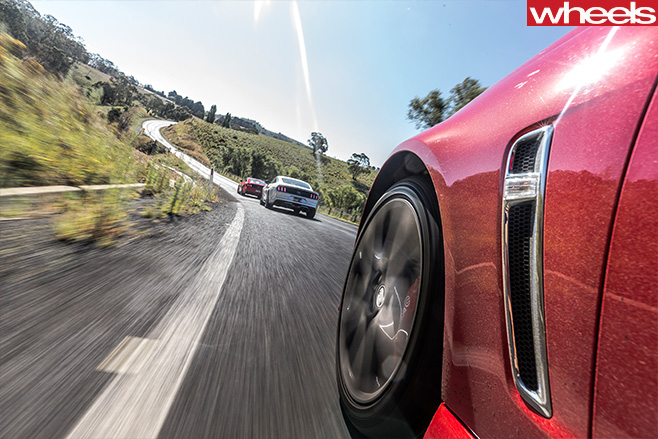
Consequently, the Commodore can’t match the roadholding and confidence of V8 Mustang. Tip the SS-V into a corner and it takes a moment to rest on its outside wheel, which is a breath the Mustang doesn’t need. Get the Redline settled, though, and it drives beautifully out of corners – the MY16 suspension changes providing a more polished ride/handling mix thanks to a longer anti-roll bar and softer rear springs. Like the Mustang, the Redline telegraphs understeer and oversteer beautifully; push through the initial body movement and there’s a wonderful sense of fluidity to its handling.
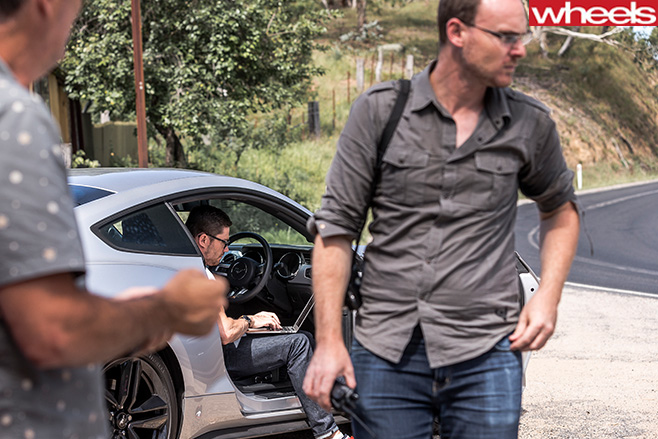
While the Ecoboost’s 2.3-litre engine felt outmuscled earlier, a tight complex of second and third gear corners makes the most of its torquey bottom end and strong mid-range. Without the room for the GT and Redline to stretch their V8-powered legs, the Ecoboost is a match, but is not as much fun as the louder, meatier V8s. Still, the Ecoboost proves it’s a quick, involving and enjoyable performance car in its own right. It also seems an ideal platform for tuners (see breakout).
With the twisty stuff behind us, we pull into the tiny goldrush town of Sofala, and meet Ron. Tall and sporting a thick grey beard that’s in stark contrast to his thin and fragile gait, Ron drinks in our trio’s mix of shapes and colours before proudly declaring he’d just ordered a Mustang that very morning.
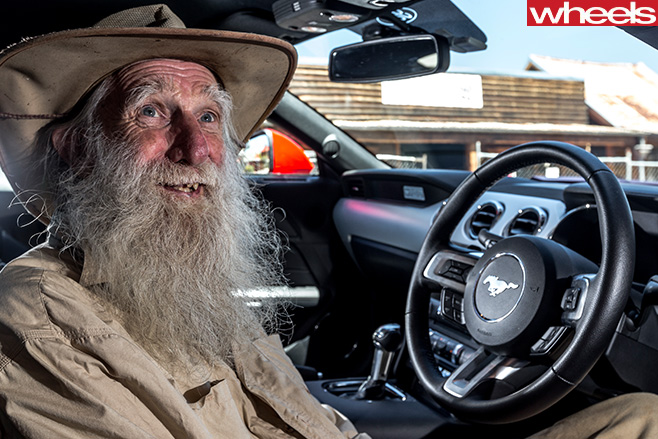
We quietly agree.
Ron also provides a reminder of just how popular this new Mustang is when he complains, “I’ve got to wait until February next year for the bloody thing to arrive!” Ford’s first shipment of 4000 Mustangs quickly sold out and now there’s a 12-month waiting list.
Still, there’s no hiding Ron’s excitement for his new pony car, and as he lowers himself gingerly into the driver’s seat it’s an opportunity to reflect on what separates these three cars.
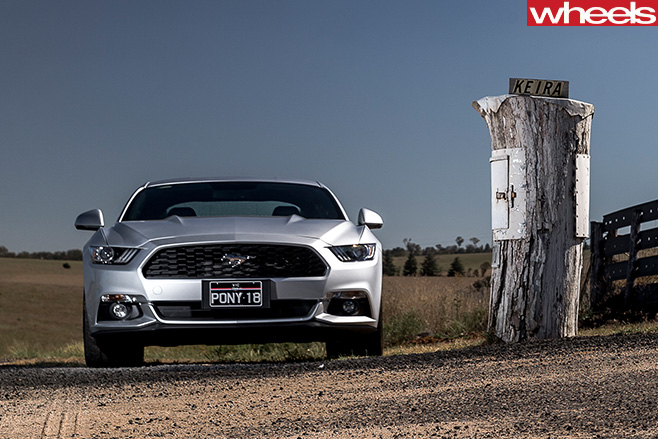
The fact that the Commodore is at the end of its life, rides on a 10-year-old platform and is a generation older than the Mustang, yet is still this good, is testament to the people who created it. The Commodore is a car made by Australians for Australians, and the VF2 SS-V Redline is the last of its breed, and undoubtedly the finest.
But as much as Australia’s Own feels like a well-sorted, sporty family car, the Mustang drives like a sports car. And of the two ’Stangs, it’s the GT’s V8 muscle and greater sense of occasion that leaves the strongest impression. It’s an intoxicating blend of rockstar looks and sorted dynamics that, after two days and hundreds of kilometres, I don’t want to give back.
This makes me think of Ron, sitting in his stained khaki clothes and cowboy hat back in the Sofala pub, waiting patiently for his white Mustang GT to arrive in 2017. He’s going to love it.
“It costs how much!?”

Just like it does for fit and finish, though, the Commodore trumps the Mustangs for interior equipment as it also gets as standard an eight-way adjustable driver’s seat compared to Mustang’s six, a head-up display, lane-departure warning and blind-spot detection.
Mustang with a meaner kick
If you reckon the Mustang GT’s 306kW/530Nm 5.0-litre V8 isn’t sufficiently hairy-chested, Ford has another, slightly madder Mustang in its stable. The Shelby GT350 is a product of Ford Performance – the same mob that make the Fiesta ST and new Focus RS, among others – and packs a 392kW/581Nm 5.2-litre V8 that revs to 8250rpm. And if that doesn’t sound fast enough, there’s a track-focused 350R with no rear seat, no air conditioning and adaptive magnetic dampers. Neither are likely to hit Aussie roads, even though Ford says there’s no technical reason preventing importation. Ford doesn’t think the business case stands up, despite Australia’s penchant for all things V8, fast and mad.
Bowser burn
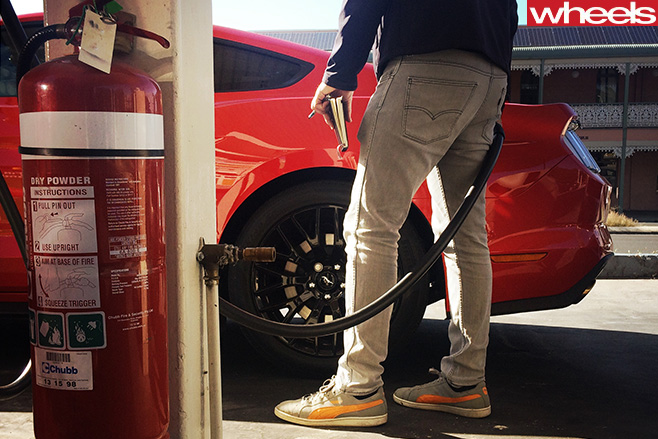
Verdict
 FORD MUSTANG GT
FORD MUSTANG GT
Price as tested: $59,990/As tested $59,990
NCAP rating: 5 stars (NHTSA)
Fuel economy: 15.8L/100km (test average)
Acceleration: 0-100km/h: 5.0sec
Plus: Winning blend of performance, dynamics, styling and desirability
Minus: Engine and exhaust note needs to be louder; interior’s rough edges
Verdict: 9.0/10
 HOLDEN COMMODORE SS-V REDLINE
HOLDEN COMMODORE SS-V REDLINE
Price as tested: $56,990/As tested $57,540* Includes $550 black roof.
NCAP rating: 5 stars (ANCAP)
Fuel economy: 15.9L/100km (test average)
Acceleration: 0-100km/h: 5.3sec
Plus: Terrific engine; capable and engaging chassis; roomy, practical packaging
Minus: Lacks visual drama in this company; sporting, yes; sports car, no
Verdict: 8.5/10
 FORD MUSTANG ECOBOOST
FORD MUSTANG ECOBOOST
Price as tested: $45,990/As tested $46,490* Includes $500 Prestige paint.
NCAP rating: 5 stars (NHTSA)
Fuel economy: 12.7L/100km (test average) (test average)
Acceleration: 0-100km/h: 6.0sec
Plus: Less weight over the nose; lighter thirst in normal driving; keen price
Minus: Not super-fast; lacks engine note; out of step with Mustang image
Verdict: 7.5/10



